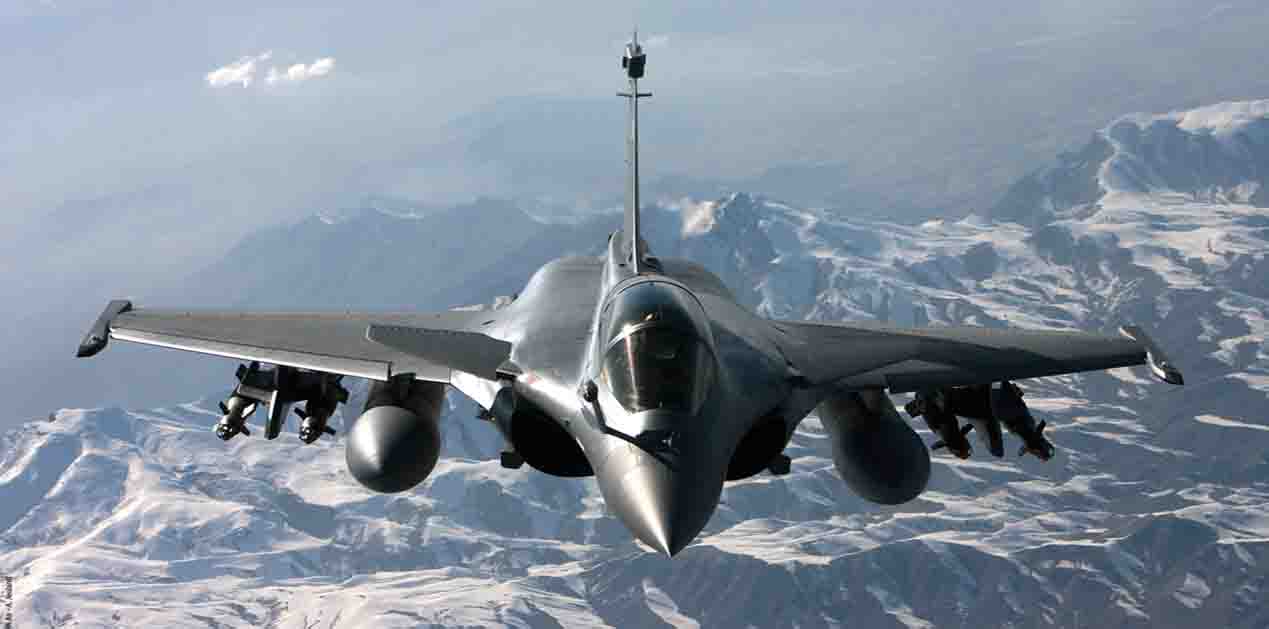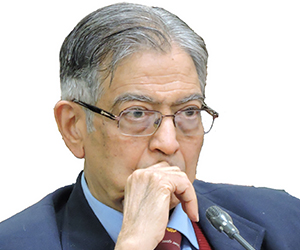In a Parliamentary Democracy the Opposition's role is clearly to criticise the Government. Such criticism must, however, be directed at the Government's failures not its successes. Should the Opposition engage in criticism for the sake of criticism, even for prima facie commendable moves, it will end up losing credibility and weakening itself.
Regrettably, this is what the Opposition has done by taking on the Government on a variety of credible issues like the surgical strikes, the handling of the Doklam crisis, acceptance and implementation of One Rank One Pension (OROP), a pro-active foreign policy, the outreach to the Indian diaspora, the reception accorded to Ivanka Trump during her recent visit to India, the economic reform process which has succeeded on many counts as reflected in the Moody sovereign rating upgrade as well as in the World Bank report on ease of doing business, etc. Amongst the latest of such totally uncalled for critiques has been the one directed at the Rafael deal whereby the BJP Government moved expeditiously to make up the critical shortage of fighter aircraft faced by the Air Force, on which the earlier Government had been shilly-shallying.
In order to make an objective assessment of the validity or other wise of the criticism mounted against the BJP Government for the Rafael deal one needs to understand the background in which it was effected. In this context, the first point of note is that despite being in office for 10 years the UPA Government was unable to finalise a deal for induction of modern fighter aircraft even though the same had become a pressing national security imperative on account of the alarming attrition of the existing fleet due to obsolescence.
Indeed, it was only in August 2007, over three years after assuming office, that the UPA Government belatedly came out with a Request for Proposal (RFP) for acquiring 126 Medium Multi Role Combat Aircraft (MMRCA). The RFP envisaged local manufacture of 108 aircraft by Hindustan Aeronautics Ltd (HAL) and outright import of 18 in fly-away condition. The RFP was poorly prepared as vital elements like weaponry, radar, etc. envisaged were neither the state-of-the-art and nor fully geared to meet our needs.
A further five years were taken by the UPA Government to announce, in 2012, the emergence of Dassault Aviation, the manufacturer of the Rafael, as the lowest bidder. However, its negotiations with Dassault Aviation could not be brought to a successful conclusion in its remaining two years in office. This was partly due to Dassault Aviation's unwillingness to take responsibility for the local manufacture of the 108 aircraft by HAL as required under the RFP, and partly due to a major difference between the two on the estimated man hours needed for local manufacture which had an important influence on pricing.
The BJP Government, on assuming office in 2014, was not able to prevail upon Dassault on these two issues despite vigorous efforts. Accordingly, the finalisation of the Medium Multi-Role Combat Aircraft (MMRCA) deal, as conceived by the UPA, became impossible. In these circumstances the government was effectively left with only two options, notably, to tender afresh, or to make a new arrangement to obtain the already selected Rafael. Since the former would have led to huge delays in the urgently required refurbishing of the IAF with its serious negative security ramifications, the second option was taken and Government decided to undertake outright import of 36 Rafael aircraft to meet the IAF's immediate needs which could brook no further delay.
The Rafael deal negotiated by the BJP Government has been criticised by the Congress on many counts, notably, that it was costlier than the one concluded by the UPA Government, that it entailed no technology transfer, that it had no Cabinet Committee on Security (CCS) approval, and that with no role for HAL, a private sector company would stand to benefit. An effort is made in the succeeding paragraphs to examine each of these criticisms.
At the very outset, as explained earlier, the UPA never "concluded" a deal with Dassault. The fact is that under Defence Minister Antony, negotiation for the MMRCA deal was conducted in a dilatory and lackadaisical fashion and accordingly, it never reached fruition.
A price comparison between the deal under negotiation between the UPA and Dassault and that concluded by the BJP is difficult as the two were quite different in nature. For one, the former was for 126 aircraft with only 18 to be purchased outright and the balance to be locally assembled by HAL under license, while the latter was for the purchase of 36 aircraft in fly-away mode. Additionally, the BJP succeeded in getting a much better equipped Rafael than that envisaged in the deal under negotiation by the UPA Government. It not only had a far superior weapon suite with a variety of air-to-air and air-to-ground beyond-visual-range missiles than the one originally under offer, but was also equipped with 13 India Specific Enhancement capabilities not supplied to any other country, and including advanced radar capabilities and ability to operate from high altitude airfields. Furthermore, built into the contract was a seven-year performance based logistic support for the entire fleet of 36 aircraft, whereas in the earlier contract such support was limited to only 5 years and that too for just 18 aircraft. Finally, as per the contract clinched by the BJP Government, Dassault guaranteed a minimum of 75 percent fleet operability at all times.
Though precise price comparison is not possible between the MMRCA deal being negotiated by the UPA Government and that concluded by the BJP Government for purchase of 36 Rafael’s due to the huge variance in the nature of the two deals as well as in the deliverables, services etc. as cited above, a rough and ready comparison can be attempted from the figures provided in noted security analyst Nitin Gokhale's recent book titled "Securing India The Modi Way". It is evident from the book that in 2011 the Ministry of Defence benchmarked the total cost of acquisition of 126 Rafael’s at Rs 163,403 crore. By an extrapolation of these figures, the per unit cost of these aircraft is around Rs 1280 crore. In contrast, the per unit cost of the basic Rafael under the BJP concluded contract is cited in the book as Rs 688 crores. Given the rather large differential in the size of the deal under consideration by the UPA Government and that concluded by the BJP Government, the per unit cost of aircraft under the former should have been substantially lower due to economies of scale and certainly not higher as appears to be the case.
As to CCS approval for concluding the Rafael deal, the same was of course obtained and is testified in not only in Nitin Gokhale's recent book but also in former Air Chief Raha's interview published in the Times of India of 13 December 2017.
Finally, the concerns on lack of technology transfer or a private party and not HAL benefitting are ill founded. Some technology transfers will occur through offsets. These will naturally be substantially smaller than those envisaged under the UPA's MMRCA deal, as the same was much larger in scope than that concluded by the BJP government. This also puts paid to the criticism that the deal provides any massive benefits to a private player. It should also be noted that under India's defence procurement policy, Dassault can choose any Indian company, public or private, as its offset partner. Given its experience with HAL, it is likely that the former will opt for another Indian partner or partners and this should not concern us unduly.
To conclude, therefore, the BJP Government, rather than being pilloried, deserves to be lauded for having concluded the Rafael deal within the short span of two and a half years, thereby addressing a pressing security requirement, which the UPA did not do in its ten years in office. Moreover, the deal finalised by the BJP government was a vast improvement over the one under consideration by the UPA, not only in terms of price and the enhanced capabilities of the aircraft ordered, but also on a variety of other counts as detailed in former Air Chief Raha's interview cited above - such as the shorter time frame of delivery of 36 aircraft in fly-away condition as against 18, advanced training to air and ground crew over and above that indicated in the original offer, enhanced period of industrial support for fleet maintenance, etc.
(The author is a former Deputy National Security Advisor)
(Views expressed are of the author and do not necessarily reflect the views of the VIF)
Image Source: https://www.pinterest.com/pin/236298311671744595/?autologin=true











Post new comment